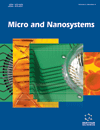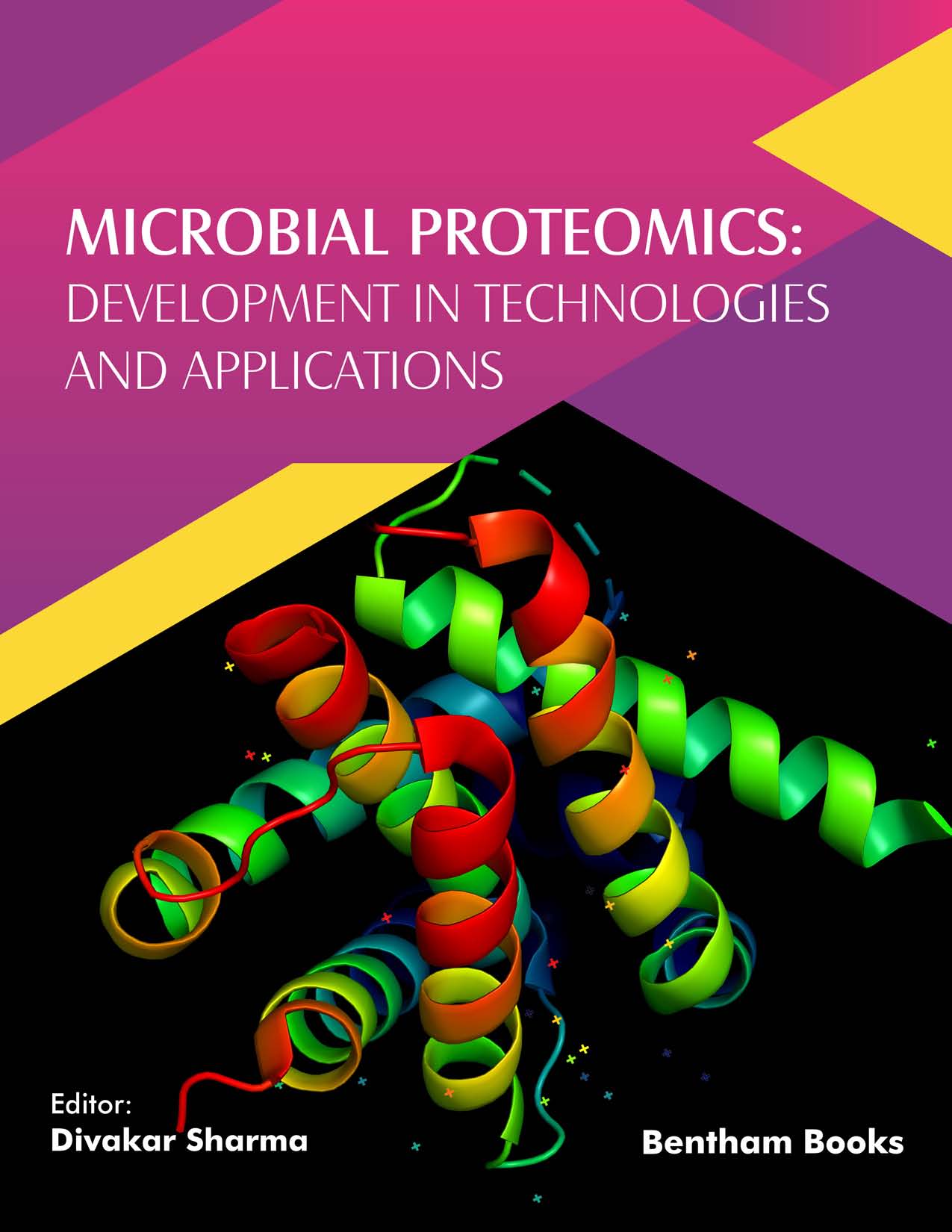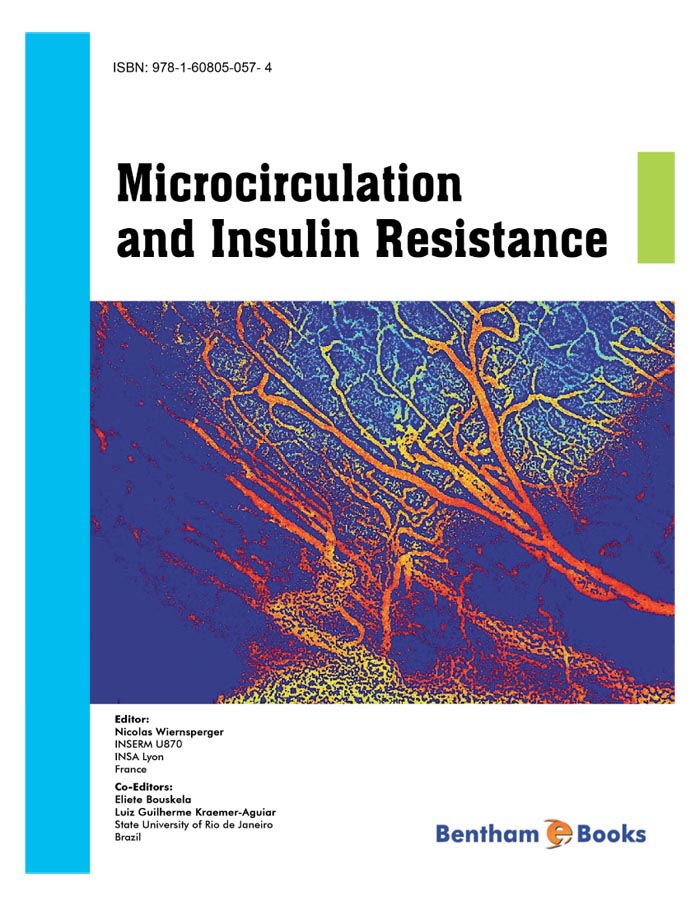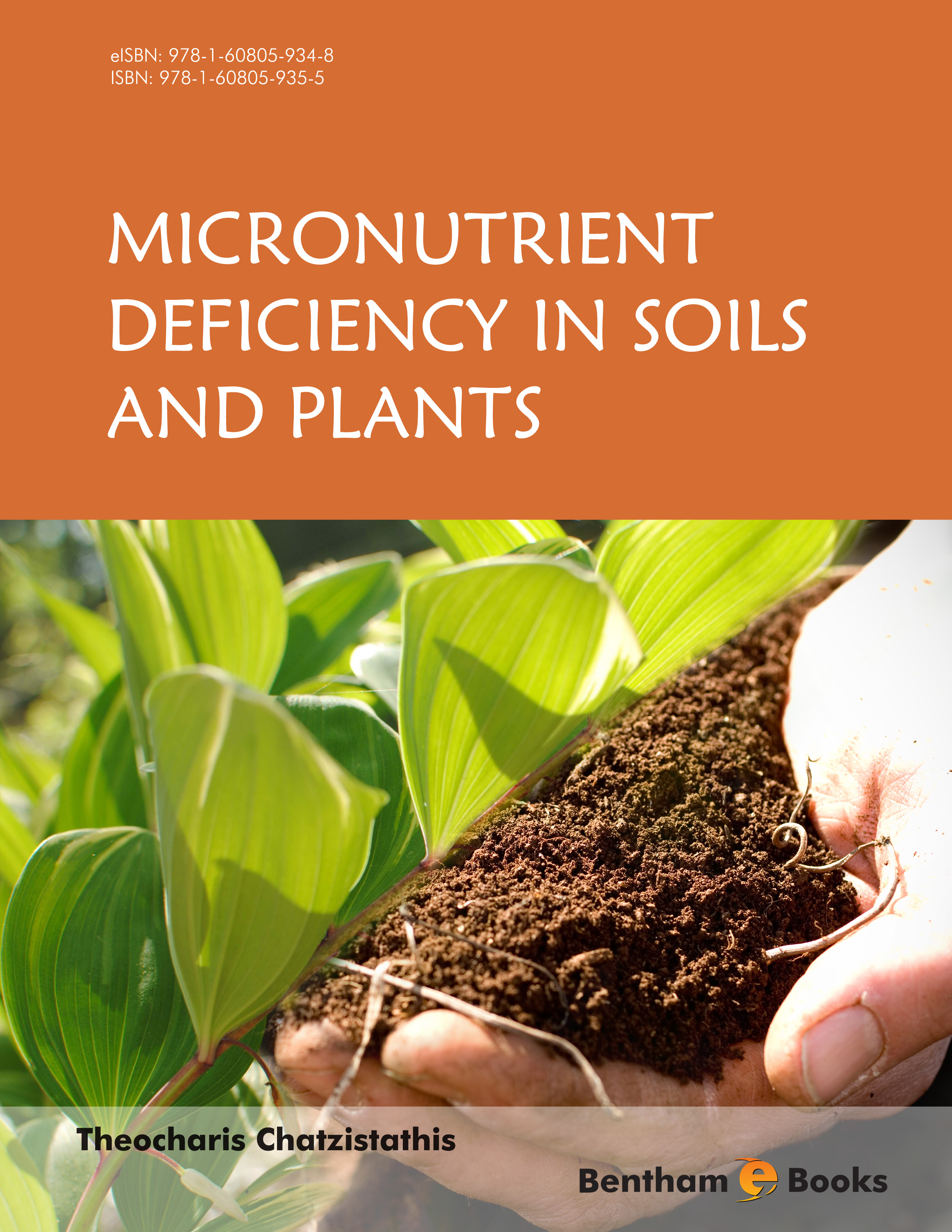Bentham Science Publishers
Bentham Science Publishers is a major publisher of more than 100 peer-reviewed science, technology and medical (STM) journals, along with a rapidly growing collection of eBooks. Since 1993, Bentham Science Publishers has been catering to the information needs of the pharmaceutical, engineering, biomedical and medical research community.1121 - 1140 of 1810 results
-
-
Metal Based Functionally Graded Materials
More LessThe aim of this Ebook is to provide a comprehensive overview of the basic production techniques for manufacturing of metal-based graded materials. A concise description of experimental methods and short analysis of some specific structures obtained are presented. In order to provide an easy-readable text, general mathematical models and specific tools for management of graded structures in metal matrix composites are presented separately in appendices. The movement of solid particles (reinforce phase) in gravity and centrifugal casting are widely discussed. Basic equations, which describe solid particle movement in case of Lorenz force application at graded structure production techniques and comprehensive model of physical phenomena in gasar technology, can also be found in this Ebook. The Ebook is useful for colleagues, who work in the field of graded structures and materials, and who need compact informative view of recent experimental and theoretical approaches in this area.
-
-
-
Metal Complexes: Environmental and Biomedical Applications
More LessMetal Complexes: Environmental and Biomedical Applications offers a comprehensive exploration of the role of metal complexes in diverse fields, including biomedicine, energy, and environmental protection. This book provides insights into the synthesis, properties, and applications of metal complexes, covering topics such as their use in therapeutics, diagnostics, energy materials, and catalysis. It also examines their antibacterial, antifungal, and sensor applications. With a systematic approach, the book is ideal for students, researchers, and professionals interested in the growing relevance of metal complexes in scientific and industrial applications.
Key Features:
- Overview of metal complexes and oxidation states.
- Synthesis of metal complexes from N-heterocyclic carbene and Schiff base ligands.
- Biomedical applications, including therapeutics and diagnostics.
- Use of metal complexes in energy storage and catalysis.
- Applications in antibacterial and antifungal treatments.
- Metal complexes as sensors and in analytical chemistry.
-
-
-
Metal Matrix Composites: A Modern Approach to Manufacturing
More LessThis book provides a comprehensive overview of metal matrix composite manufacturing, including fabrication methods, characterization techniques, and manufacturing applications. 10 chapters cover fundamental and applied topics on matrix metal composites. The book is a resource for all readers seeking to gain an in-depth understanding of metal matrix composites with its relevance to the modern industry.
Key Features
- Includes fully referenced contributions by experts in materials science
- Provides an introduction to the subject, and a future prospective for a broad range of readers
- Reviews current knowledge on fabrication techniques and structure property relationships of metal matrix composites
- Includes dedicated chapters for reinforced composites (carbon fiber, carbon nanotubes, aluminium)
- Includes guidance on material wear and tear and
- Provides an investigation for process optimization for EDM for newly developed composites
It is designed to be an essential resource for students and professionals in the field of materials science and engineering, as well as researchers and engineers working on metal matrix composite in manufacturing industries.
-
-
-
Metallic Oxynitride Thin Films by Reactive Sputtering and Related Deposition Methods: Process, Properties and Applications
More LessOxynitride thin film technology is rapidly impacting a broad spectrum of applications, ranging from decorative functions (through optoelectronics) to corrosion resistance. Developing a better understanding of the relationships between deposition processes, structure and composition of the deposited films is critical to the continued evolution of these applications. This e-book provides valuable information about the process modeling, fabrication and characterization of metallic oxynitride-based thin films produced by reactive sputtering and some related deposition processes. Its contents are spread in twelve main and concise chapters through which the book thoroughly reviews the bases of oxynitride thin film technology and deposition processes, sputtering processes and the resulting behaviors of these oxynitride thin films. More importantly, the solutions for the growth of oxynitride technology are given in detail with an emphasis on some particular compounds. This is a valuable resource for academic learners studying materials science and industrial coaters, who are concerned not only about fundamental aspects of oxynitride synthesis, but also by their innate material characteristics.
-
-
-
Metallurgy and Technology of Steel Castings
More LessMetallurgy and Technology of Steel Castings is a comprehensive textbook for students and professional engineers in the field of foundry engineering and materials science. The topics covered in this book explain the association between the quality of liquid metal and the properties of the finished cast. Readers will learn about the thermodynamic conditions for addition and recovery of chemical elements (such as Cr, Ni and Mo) in steel, degasifying processes, the influence of alloying additives for manufacturing steel castings that operate in extreme temperatures, anti-corrosive steels and basic cast conditions for making the castings (pouring and heat treatment systems).
Metallurgy and Technology of Steel Castings gives readers essential information about steel and steel cast manufacturing processes and equips them with the knowledge to overcome the challenges faced in the foundry environment.
-
-
-
Methods For Preclinical Evaluation of Bioactive Natural Products
More LessNatural products have dominated our lives since ancient times. Today, they are an inexhaustible source of new medications for disease treatment. The practice of evaluating bioactive compounds extracted from natural sources has also advanced significantly, prompting a need to understand current methods to identify and evaluate them. This book covers basic scientific aspects of preclinical research on natural products for specific conditions and diseases. These include aging, gynecological disorders, inflammatory disorders, renal disorders and cardiovascular disorders. Each of the 10 book chapters give a structured overview on preclinical methods on the etiology of diseases, natural products as the materials for the bioassays, extract types, concentration of the extracts/compounds for in vitro and in vivo assays, preparation of the test materials, application of the test materials, step-by-step methods and related calculations. The book is intended as a quick reference for natural product researchers, pharmacists and postgraduate students in pharmacognosy. Medical doctors working in preclinical research on natural products will also benefit from the information provided.
-
-
-
Methods and Techniques in Nematology
More LessMethods and Techniques in Nematology discovers the intricate world of nematodes, a comprehensive guide essential for researchers, academics, and enthusiasts alike. This book addresses the methods crucial for studying these unsegmented roundworms, covering everything from sampling techniques to advanced molecular diagnostics and biodiversity analysis.
Key Features:
- Detailed sampling methods for diverse habitats.
- Extraction procedures for soil, root, and entomopathogenic nematodes.
- Microscopic observation techniques including SEM and DIC.
- Molecular diagnostic tools such as PCR and RFLP.
- Introduction to bioinformatics for nematology.
- Comprehensive biodiversity analysis, both conventional and molecular.
- Culturing and greenhouse studies for experimental purposes.
-
-
-
Methods to Determine Enzymatic Activity
More LessMethods to Determine Enzymatic Activity is a textbook about industrial enzymes. The book features definitions, classifications and applications of selected enzymes important in industry and in biotechnological processes. Analytical methods for these enzymes are also included in the text. The main objective of this textbook is to provide readers information focused on the current analysis methods of enzymatic activity at qualitative and quantitative levels. Each chapter is about one specific enzyme and contains information about its substrate and some biochemical properties. The methodologies are presented as an experimental protocol allowing interested readers to reproduce the experimental methods detailed within the textbook. These protocols contain the principle of the technique, materials, methods, and all steps necessary for the determination of enzyme activity and interpretation of results. Each methodology is illustrated with photos and schemes for a better and clear understanding. This book, therefore, uniquely brings modern analysis techniques of industrial enzymes in a single easy to understand volume. This textbook is suitable for undergraduate enzymology courses and advanced industrial biotechnology and microbiology courses.
-
-
-
Micro and Nanomachining Technology-Size, Model and Complex Mechanism
More LessRecent advances in science and technology such as online monitoring techniques, coupling of various processing methods, surface characterization and measurement techniques have greatly promoted the development of ultraprecise machining technology. This precision now falls into the micrometer and nanometer range - hence the name micro & nanomachining technology (MNT).
Machining is a complex phenomenon associated with a variety of different mechanical, physical, and chemical processes.
Common principles defining control mechanisms such as O Jamie de geometry, Newton mechanics, Macroscopic Thermodynamics and Electromagnetics are not applicable to phenomena occurring at the nanometer scale whereas quantum effects, wave characteristics and the microscopic fluctuation become the dominant factors. A remarkable enhancement in computational capability through advanced computer hardware and high performance computation techniques (parallel computation) has enabled researchers to employ large scale parallel numerical simulations to investigate micro & nanomachining technologies and gain insights into related processes.
Micro and Nanomachining Technology - Size, Model and Complex Mechanism introduces readers to the basics of micro & nanomachining (MNT) technology and covers some of the above techniques including molecular dynamics and finite element simulations, as well as complexity property and multiscale MNT methods.
This book meets the growing need of Masters students or Ph.D. students studying nanotechnology, mechanical engineering or materials engineering, allowing them to understand the design and process issues associated with precision machine tools and the fabrication of precision components.
-
-
-
Micro and Nanosystems
More LessMicro and Nanosystems publish significant original work, topical reviews and guest edited issues ranging from technologies and systems to product innovation and new manufacturing processes with features at the micro and nanoscale. Applications for micro and nanosystems in areas such as health, environmental, food, security and consumer goods will be covered. The topics to be addressed will include Lab-on-a-chip, microfluidics, nano-biotechnology, micro and nanomanufacturing, printed electronics and MEMS.
-
-
-
MicroRNA
More LessMicroRNA publishes letters, full-length research, review articles, drug clinical trial studies and thematic issues on all aspects of microRNA (miRNA) research. The scope of the journal covers all experimental miRNA research and applied research in health and disease, including therapeutic, biomarker, and diagnostic applications of MiRNA.
-
-
-
MicroRNAs and Cardiovascular Disease
More LessMicro RNAs (miRNAs) are known to play an important role in gene expression regulation. Owing to their ever-increasing implications in the control of various biological and pathological processes, miRNAs have now been considered novel biomarkers of various human diseases including, cancer, viral disease, cardiovascular disorders, metabolic disturbances, etc. Unique expression profiles have been associated with specific pathological states.
Cardiovascular disease is among the main causes of mortality in developed countries. The pathological process of the heart is associated with altered expression profile of genes that are important for cardiac function. The implications of miRNAs in the pathological process of the cardiovascular system have recently been recognized, and the research on miRNAs in relation to cardiovascular disease is now in rapid progress. The aim of this ebook is to present updated research on the subject with analyses from published reports. Micro RNAs and Cardiovascular Disease caters to the growing interest and information needs of cardiac clinicians and gene expression researchers.
-
-
-
Microalgae as a Source of Bioenergy: Products, Processes and Economics
Recent Advances in Renewable Energy: Volume 1
More LessMicroalgae could play an important role in the achievement of sustainability goals related to the generation of renewable energy and greenhouse gas (GHG) emissions. These photosynthetic microorganisms are able to capture CO2 and, therefore, can be used to produce biofuels such as ethanol, methane and green diesel. Other factors, such as their high growth rate, ability to use wastewater as a culture medium and the ability to grow on non-arable land makes them a potentially economical source of biofuel production on a large scale.
This monograph introduces the reader to the basic and applied science of microalgal biofuel production. Chapters in the volume give information about bioethanol and biogas production from microalgal sources, the fermentation process, optimization of culture parameters and industrial applications of biomass projects.
The book is a useful reference for biotechnology and environmental science graduates and professionals interested in biofuel production.
-
-
-
Microbes as Agents of Change for Sustainable Development
Microbes and Microbiomes for Clean and Green Environment: Volume 2
More LessMicrobes as Agents of Change for Sustainable Development explores the pivotal role of microbes and microbiomes in restoring degraded ecosystems and advancing sustainable practices. This comprehensive resource bridges cutting-edge research and practical solutions, emphasizing microbial applications in ecosystem restoration, renewable energy, waste management, agriculture, and climate change mitigation.
The book, which spans 22 chapters, provides insights into topics like nutrient cycling, bioremediation, biofertilizers, and microbial genomics. It also highlights innovative approaches, such as microbial fuel cells, pollution monitoring with biosensors, and the role of microbes in GHG emission mitigation.
Key Features:
- Explores the UN Decade on Ecosystem Restoration and the socio-economic benefits of microbes.
- Discusses microbial roles in polluted ecosystem restoration and renewable energy production.
- Highlights microbes` contribution to sustainable agriculture, waste management, and climate action.
-
-
-
Microbial Biopolyester Production, Performance and Processing Bioengineering, Characterization, and Sustainability
Recent Advances in Biotechnology: Volume 2
More LessGlobal plastic production is estimated to be over 300Mt annually. Most conventional plastics are predominantly produced from fossil fuels and are highly resistant to biodegradation, and only a small share of about 20% of spent plastics is believed to be recycled, which is a cause for environmental concern. Biodegradable plastics would solve this concern as they are a sustainable alternative, yet these do not even cover 5% of the global plastic market.
Microbial polyhydroxyalkanoates (PHAs) are a versatile group of polyesters produced by nature as prokaryotic storage materials. PHAs can be produced through sustainable bioprocess engineering and have displayed remarkable flexibility in their physical and chemical properties. PHAs are the subject of several scientific papers and numerous PHA patents have also been filed, generating significant interest in the plastic production industry.
To develop overall sustainable and efficient production processes, all bioprocess steps need to be thoroughly understood and accounted for. These processes start with the selection of suitable inexpensive raw materials (microbes and enzymes), optimizing the process engineering and process regime, and conclude with the enhancement of product recovery in terms of time, energy, and material input.
Microbial Biopolyester Production, Performance and Processing: Bioengineering, Characterization, and Sustainability is a compilation of eight chapters covering bacterial polyesters, green plastics and PHAs from various angles. The contents of this volume focus on sustainable practices focus on the sustainability of processes that involve the synthesis and recycling of these meterials. The volume is a useful resource for bioprocess engineers, microbiologists, biotechnologists and chemical engineers interested in the basics of biodegradable plastic production.
-
-
-
Microbial Biopolyester Production, Performance and Processing Microbiology, Feedstocks, and Metabolism
Recent Advances in Biotechnology: Volume 1
More LessGlobal plastic production is estimated to be over 300Mt annually. Most conventional plastics are predominantly produced from fossil fuels and are highly resistant to biodegradation, and only a small share of about 20% of spent plastics is believed to be recycled, which is a cause for environmental concern. Biodegradable plastics would solve this concern as they are a sustainable alternative, yet these do not even cover 5% of the global plastic market.
Microbial polyhydroxyalkanoates (PHAs) are a versatile group of polyesters produced by nature as prokaryotic storage materials. PHAs can be produced through sustainable bioprocess engineering and have displayed remarkable flexibility in their physical and chemical properties. PHAs are the subject of several scientific papers and numerous PHA patents have also been filed, generating significant interest in the plastic production industry.
To develop overall sustainable and efficient production processes, all bioprocess steps need to be thoroughly understood and accounted for. These processes start with the selection of suitable inexpensive raw materials (microbes and enzymes), optimizing the process engineering and process regime, and conclude with the enhancement of product recovery in terms of time, energy, and material input.
Microbial Biopolyester Production, Performance and Processing: Microbiology, Feedstocks, and Metabolism encompasses eight chapters that cover aspects of the microbiology and biotechnology of producing biodegradable plastics. The contents focus on the selection of powerful archaeal and eubacterial production strains, genetic engineering as a tool for optimized PHA production and inexpensive carbon sources for microbial cultures. The volume is a useful resource for bioprocess engineers, microbiologists, biotechnologists and chemical engineers interested in the basics of biodegradable plastic production.
Recent Advances in Biotechnology is a book series comprising of peer-reviewed reference works and monographs that compile the latest developments in the field of biotechnology. Each volume has a thematic focus and features topical reviews written by experts. The series will highlight multidisciplinary perspectives to interested readers (biotechnologists, microbiologists, bioprocess engineers, agronomists, medical professionals, sustainability researchers etc.)
-
-
-
Microbial Proteomics: Development in Technologies and Applications
Current and Future Developments in Proteomics: Volume 1
More LessThis volume brings current knowledge of proteomics technologies and related developments with special reference to diseases caused by microbes. The editor has compiled chapters written by expert academicians which distill the information about useful methods in microbial proteomics for the benefit of readers. Chapters cover several methods used to investigate the microbial proteome and special topics such as antimicrobial drug resistance mechanisms, biomarker developments, post translational modifications.
Key Features:
-overview of several biochemical methods in proteomics
-full-color, high quality images of the most frequent technologies and applications
-concise, well organized, and didactic format
-updates in basic applied information
-bibliographic references
-information on proteomics for tuberculosis treatment
This reference work is intended for researchers seeking information on laboratory techniques applied in proteomics research and microbiology.
-
-
-
Microbiology for ICAR NET: A Comprehensive Exam Preparation Guide
More LessMicrobiology for ICAR NET: A Comprehensive Exam Preparation Guide is a valuable resource tailored for students preparing for the ICAR NET exam in Microbiology. This guide offers an in-depth overview of key microbiological topics, including microbial physiology, soil microbiology, environmental microbiology, and microbial biotechnology. Organized into eight comprehensive chapters, the book covers foundational concepts such as the scope of microbiology, prokaryotes, and microscopy, while aligning closely with the ICAR NET syllabus.
Ideal for ICAR NET aspirants, this guide also serves as a solid review tool for microbiology students, researchers, and professionals.
Key Features:
- Includes multiple-choice, true/false, and fill-in-the-blank questions for active learning.
- Detailed answer key for self-assessment and concept reinforcement.
- Comprehensive coverage of topics essential for ICAR NET Microbiology exam preparation.
- Covers a wide range of microbiology topics.
-
-
-
Microcirculation and Insulin Resistance
More LessInsulin resistance is the main factor involved in the occurrence of the metabolic syndrome and later development of type2 diabetes. Despite decades of research on hormone's target tissues and the identification of most diverse candidates, the factors responsible for insulin resistance are still largely undefined. There is also a large discrepancy between in vitro and in vivo insulin sensitivity. Finally it is increasingly demonstrated that insulin resistance is found very early in life, long before metabolic syndrome is established. In search for commonalities, this book deals therefore with a new hypothesis considering microcirculation as one prime, possibly causal effector of insulin resistance. To present this novel hypothesis, the specificities of microvascular physiological mechanisms and the limits of interpretations of data according to the measurement techniques used are first thoroughly described. Several chapters deal with experimental and clinical investigations showing the involvement of microcirculation in insulin resistance. This book provides sound support for microcirculation being linked to insulin resistance at least in a bidirectional way. Supportive evidence suggests that microvascular dysfunction may lie upstream of insulin resistance in many of them. While this is still a hypothesis, the authors believe that there is enough data supporting it and hope that this book will stimulate researchers to provide the necessary final proofs.
-
-
-
Micronutrient Deficiency in Soils and Plants
More LessMicronutrient Deficiency in Soils and Plants highlights the problems caused by micronutrient deficiencies in vegetative production. This eBook emphasizes on the necessary requirements for plant growth micronutrients, the vital deficiency symptoms of micronutrients and their crucial role in plant metabolism.
The scope of this eBook covers a range of topics including micronutrient deficiency, the availability of micronutrient in soils, plant metabolism and micronutrient solubility.
The contents of this eBook include chapters on micronutrient solubility and availability in soils, the role of micronutrients in plant metabolism and growth and diagnostic tools to assess deficiencies of iron, zinc, copper and other micro-nutrients.
Micronutrient Deficiency in Soils and Plants is a valuable resource for MSc and PhD students, academic personnel and researchers seeking updated and critically important information on major nutritional problems in agricultural soils and crops.
-




















